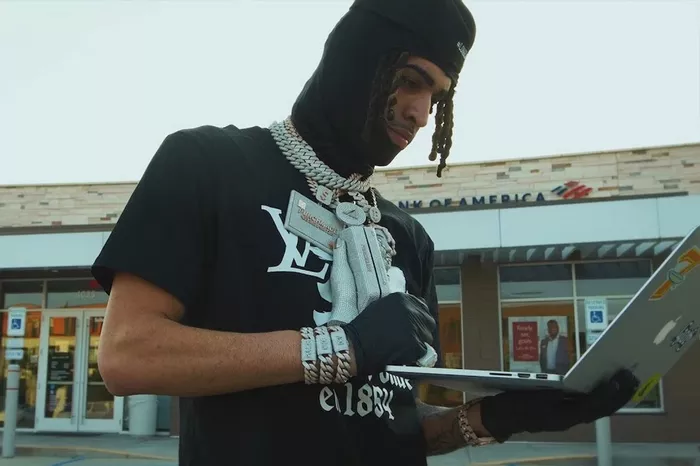Rap music, a genre born in the Bronx in the 1970s, has come a long way since its humble beginnings. It has traversed through multiple eras, each marked by its unique style, influences, and popularity. In this article, we will delve deep into the history of rap music, exploring when it was most popular and how it has evolved over the years.
The Birth of Rap: A Cultural Revolution
The origins of rap music can be traced back to the streets of New York City, specifically the South Bronx, in the early 1970s. This innovative genre was a response to the social and economic challenges faced by African American and Latino communities in the urban landscape. Rap emerged as a form of self-expression, a way for marginalized voices to be heard.
In the beginning, rap was largely confined to local block parties and underground clubs. It was an art form centered around spoken word poetry and rhythmic beats, with DJ Kool Herc often credited as one of its pioneers. The early days of rap were marked by its raw, unpolished nature, as artists used rap as a means to tell stories about their lives, their neighborhoods, and the issues they faced. The popularity of rap during this period was limited to the underground music scene of New York City.
The 1980s: Rap Goes Mainstream
As the 1980s rolled in, rap began to gain a foothold in the mainstream music industry. Artists like Run-DMC, LL Cool J, and the Beastie Boys started to break through, bringing rap music to a wider audience. This decade witnessed the emergence of music videos, a medium that played a pivotal role in rap’s rising popularity. Iconic videos like Run-DMC’s “Walk This Way” collaboration with Aerosmith helped rap transcend its cultural boundaries.
Rap music during the 1980s was characterized by its distinctive beats, lyrical storytelling, and the birth of hip-hop fashion. It was during this time that the term “gangsta rap” first surfaced, with artists like N.W.A. and Ice-T addressing the harsh realities of life in the inner city. While gangsta rap was controversial for its explicit content, it played a significant role in shaping the rap landscape and capturing the attention of both fans and critics.
The 1990s: The Golden Era of Rap
If there is a decade that can be considered the golden era of rap, it would undoubtedly be the 1990s. This period saw an explosion of talent, creativity, and innovation within the genre. Artists like Tupac Shakur, The Notorious B.I.G., and Nas became household names, delivering iconic albums that are still celebrated today.
The popularity of rap during the 1990s was not limited to the United States; it had a global reach. Rap music transcended borders and became a cultural phenomenon. The lyrical prowess of artists and the diverse production styles made rap accessible to a wide range of listeners. The emergence of East Coast and West Coast rap scenes added depth and diversity to the genre, further fueling its popularity.
The Turn of the Millennium: Rap in the Digital Age
As the new millennium approached, rap music continued to evolve. The advent of the internet and digital technology transformed the music industry as a whole, and rap was no exception. With the rise of platforms like Napster and later, iTunes, music became more accessible than ever before. This accessibility allowed for a proliferation of rap subgenres and a democratization of the music-making process.
During this period, artists like Eminem, Jay-Z, and Kanye West rose to prominence, pushing the boundaries of rap music both lyrically and sonically. The popularity of rap continued to grow, with albums like Eminem’s “The Marshall Mathers LP” and Jay-Z’s “The Blueprint” becoming cultural landmarks.
The 2010s and Beyond: Rap’s Dominance in Popular Culture
The 2010s marked a continuation of rap’s dominance in popular culture. The genre expanded its influence beyond music, with rap artists making their mark in fashion, film, and even politics. Artists like Kendrick Lamar, Drake, and Cardi B achieved mainstream success and critical acclaim, demonstrating the genre’s enduring relevance.
The 2010s also witnessed the rise of trap music, a subgenre of rap characterized by its heavy beats and auto-tuned vocals. Trap artists like Future and Travis Scott found massive success, bridging the gap between rap and other genres like EDM and pop. This fusion of styles contributed to rap’s ever-expanding popularity.
Conclusion
In conclusion, rap music has had several peaks of popularity throughout its history, with each era contributing to its rich and diverse tapestry. From its humble beginnings in the South Bronx to its global dominance in the 2010s, rap has continually evolved, pushing artistic boundaries and reflecting the cultural zeitgeist.
The question of when rap was most popular is subjective and can vary depending on one’s perspective. Some may argue that the 1990s were the golden era, while others may point to the genre’s continued relevance in the 2010s and beyond. Regardless of the specific timeframe, one thing is clear: rap music’s impact on popular culture is undeniable, and its legacy will continue to shape the music industry for generations to come.
In conclusion, rap music has had several peaks of popularity throughout its history, with each era contributing to its rich and diverse tapestry. From its humble beginnings in the South Bronx to its global dominance in the 2010s, rap has continually evolved, pushing artistic boundaries and reflecting the cultural zeitgeist.
The question of when rap was most popular is subjective and can vary depending on one’s perspective. Some may argue that the 1990s were the golden era, while others may point to the genre’s continued relevance in the 2010s and beyond. Regardless of the specific timeframe, one thing is clear: rap music’s impact on popular culture is undeniable, and its legacy will continue to shape the music industry for generations to come.

